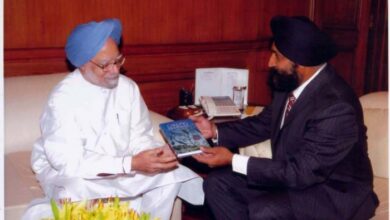BOOK REVIEW: An insight into Jaintia social & political evolution

 The Jaintias in Meghalaya are among the three distinct tribes that have shaped the socio-politico-economic scenario of the state. The Jaintias have a distinct culture and tradition and a long political history that evolved over a century through interactions with the population in the plains of Assam and Bangladesh. A new book looks into the developments by chronologically examining the events that sculpted the region’s politics.
The Jaintias in Meghalaya are among the three distinct tribes that have shaped the socio-politico-economic scenario of the state. The Jaintias have a distinct culture and tradition and a long political history that evolved over a century through interactions with the population in the plains of Assam and Bangladesh. A new book looks into the developments by chronologically examining the events that sculpted the region’s politics.
Political Development in the Jaintia Hills of Meghalaya (1835-1972) by Dr Wanwei Roy Kharlukhi puts the lens on the political upheavals in the region particularly during the British era with a prelude to the Jaintia Kingdom, the linguistic variations, the social fabric and the religious beliefs of the tribe.
Related article: Pala says govt cannot mix Khasi language with Jaintia tribe and history
The Jaintia Hills region, which comprises West and East Jaintia Hills districts today, borders Assam and Bangladesh. The tribesmen are called Synteng, a word that has its origin in Sutnga, the ruling dynasty of the Jaintias. The term Jaintia dates back to the 12th century. Before this, several names — such as the Amwis, Changpungs and Rymbais — were used to describe the region and the population here.
From the beginning, the Jaintias had a clear socio-political hierarchy system. The family formed the first unit of the societal pyramid followed by the sub-clan or Chi-kpoh and the clan or Chi-kur. The different clans formed a village and members of different villages formed a sub-tribe or chi-raid. Finally, the sub-tribes formed a tribe or Ka Jaitbru that made up a Hima or state. A Syiem or king would be the head of the Hima.
However, in the earlier days, each village administration was headed by a priest or Langdoh. As the population increased and social and political responsibilities became unmanageable by a singular entity, the secular and religious duties were divided between the Daloi or administrative official and the Langdoh, respectively.
The political duties were also clearly demarcated among different tiers of representatives. “With the institution of kingship, a three-tier system of administration was established in the Jaintia Kingdom. The first tier was that of the King (U Syiem to his hill people and a Raja to his subjects in the plains); the second tier were the Raids or Elakas (provinces) each under the provincial governor (U Daloi); and the third tier was the village administration each under the village headman (U Waheh Chnong),” Kharlukhi explains.
The book gives a lucid description of the social and political systems of the Jaintia tribe and vividly talks about the functions of the people’s representatives heading the different sections of the systems.
Kharlukhi especially puts the lens on the Jaintia kingdom and the struggles of the tribesmen under the British administration. The Jaintias’ first tryst with the British was in 1774. While the British occupation of the Jaintia kingdom during this period was short, the Syiem made a treaty with the British in the early 19th century to keep the Burmese army at bay. Over time, the British government annexed the kingdom to expand its territorial command. Shocked at the “abrupt termination of the Syiemship”, the tribesmen decided to begin their fight for freedom. A significant people’s movement was in 1862 that was propelled by various reasons, including economic and religious.
The book is a collation of historical events which led to the current socio-political system of the region. This not only helps one understand the power structure of the Jaintias in the pre- and post-British era but also gives a clear picture of the evolution of the tribe over time. It is a significant collection for academics and general readers within and outside the state to have a clear view of a tribe that refused to give in to the arm-twisting of foreign rulers and fought for its political space in modern times.
Book: Political Development in the Jaintia Hills of Meghalaya (1835-1972); Author: WR Kharlukhi; Publisher: Astral; Pages: 153; Price: Rs 1195




